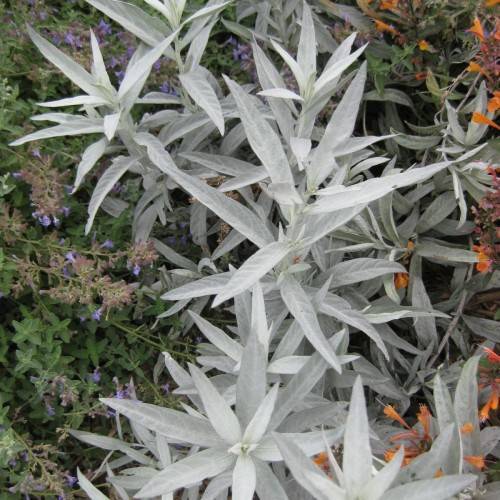
Prairie Sage
Artemisia ludoviciana subsp. ludoviciana
Also Known As - White Sagebrush,Silver WormwoodWatering:
Frequent
Hardiness Zone:
Sun:
full sun,part shade
Leaf:
Yes
Growth Rate:
Low
Poisonous To Humans:
Yes
Poisonous To Pets:
Yes
Drought Tolerant:
Yes
Salt Tolerant:
Yes
Invasive:
Yes
Care Level:
Medium
watering
It is important to water Siberian Wormwood (Artemisia laciniata subsp. laciniata) regularly. It is a drought tolerant plant but will benefit from moderate watering. Water the plant deeply and infrequently to encourage deeper roots. During the summer, water the plant thoroughly once or twice a week. During winter, water only when the top layer of soil feels dry to touch. Ensure that the soil draining is good so that the moisture stays in the soil for longer time. Avoid heavy overwatering as it can lead to root rot or fungal infections.
sunlight
Siberian Wormwood is a plant species that thrives best in full sunlight. This plant prefers about 4 to 5 hours of direct sun per day, with plenty of indirect sun exposure in the remainder of the day. It can also tolerate periods of partial shade as well. The ideal location for this plant would be in an area that receives direct sun in the morning and late afternoon, with some shade at mid-day. Siberian Wormwood is not particularly cold hardy and can suffer damage from extended exposure to temperatures below freezing. For best results, it should be grown in zones 4-9.
pruning
Siberian Wormwood should be lightly pruned in late winter or early spring. Begin pruning just after the shrub blooms or in early March. When pruning, remove up to 1 third of the oldest, thickest branches to allow space for new growth. The remaining branches may be trimmed to shape and reduce their length. If the shrub is becoming overgrown, more aggressive pruning can be done, but it is best to remove the oldest wood. Severe pruning, especially in mid-summer or late fall could lead to dieback, so avoid those times.
